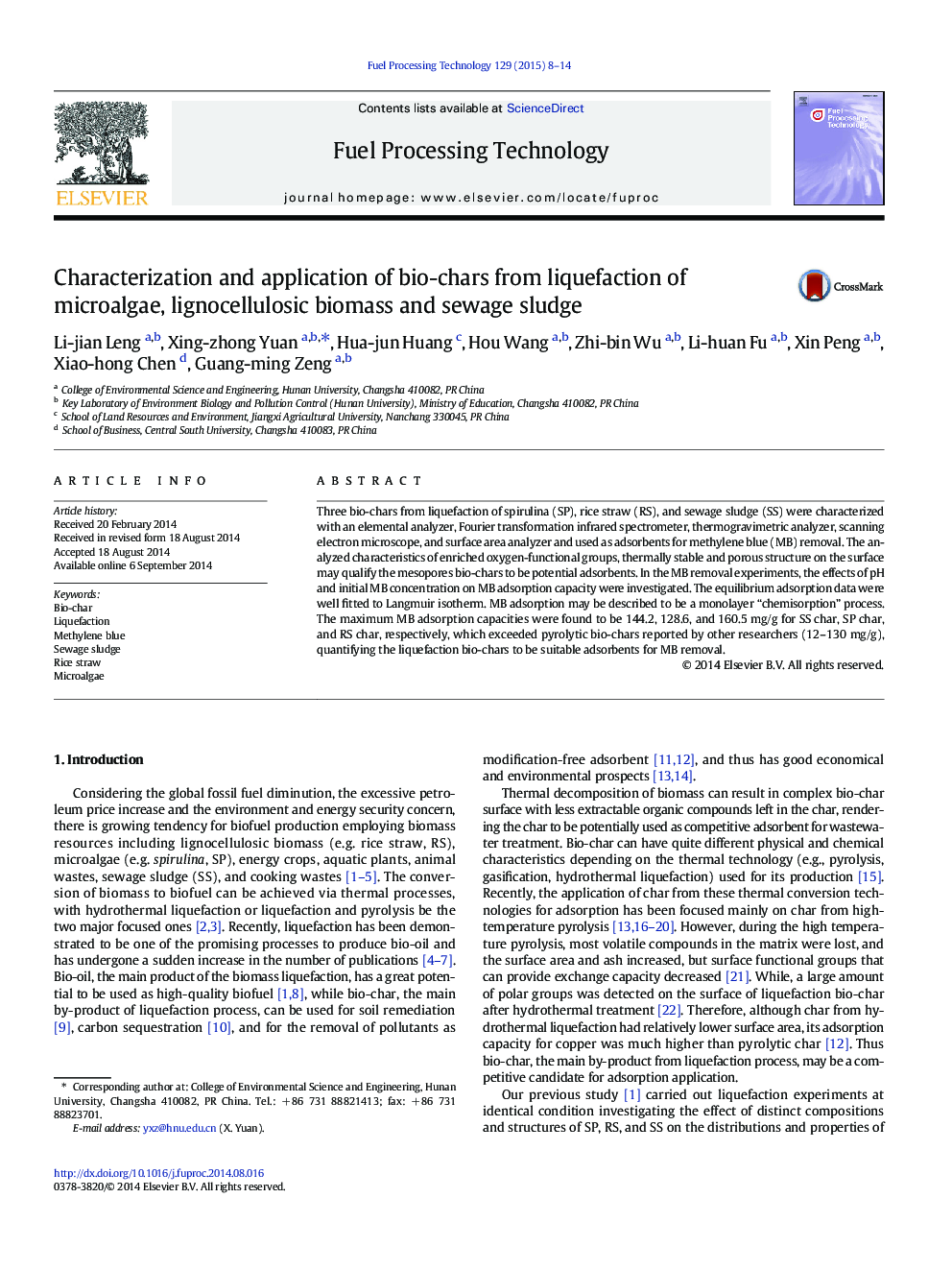| Article ID | Journal | Published Year | Pages | File Type |
|---|---|---|---|---|
| 209609 | Fuel Processing Technology | 2015 | 7 Pages |
•Liquefaction bio-chars have good performances on MB adsorption (capacity 160.5 mg/g).•MB adsorption capacity of liquefaction bio-chars exceed pyrolytic bio-chars reported.•MB adsorption mechanism may be described to be monolayer chemisorption.
Three bio-chars from liquefaction of spirulina (SP), rice straw (RS), and sewage sludge (SS) were characterized with an elemental analyzer, Fourier transformation infrared spectrometer, thermogravimetric analyzer, scanning electron microscope, and surface area analyzer and used as adsorbents for methylene blue (MB) removal. The analyzed characteristics of enriched oxygen-functional groups, thermally stable and porous structure on the surface may qualify the mesopores bio-chars to be potential adsorbents. In the MB removal experiments, the effects of pH and initial MB concentration on MB adsorption capacity were investigated. The equilibrium adsorption data were well fitted to Langmuir isotherm. MB adsorption may be described to be a monolayer “chemisorption” process. The maximum MB adsorption capacities were found to be 144.2, 128.6, and 160.5 mg/g for SS char, SP char, and RS char, respectively, which exceeded pyrolytic bio-chars reported by other researchers (12–130 mg/g), quantifying the liquefaction bio-chars to be suitable adsorbents for MB removal.
